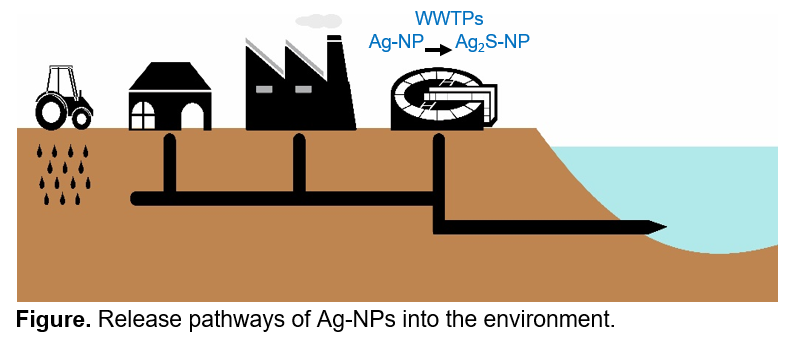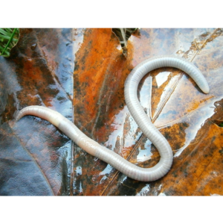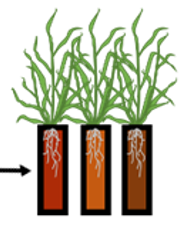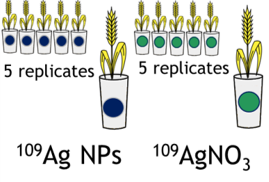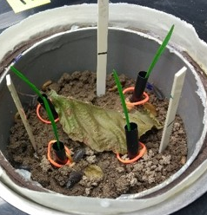NanoFASE Experimental Case Studies: Ag-NPs fate in the living environment
|
Silver nanoparticles (Ag-NPs) are used in a variety of products such as in the manufacture of anti-odour sports clothing. During the household or industrial washing of these nano-enabled products, Ag-NPs can be released to the municipal sewer system, where they may attach to sewage sludge. After waste treatment, sludge is often applied to agricultural land as a fertilizer, where NPs may then accumulate in the soil and soil-dwelling organisms such as plants and invertebrates. |
|
|
Furthermore, when transiting through waste water treatment plants (WWTPs) Ag-NPs may be transferred to aquatic environments through effluent discharge. Freshwater systems are important sinks for NPs, especially the sediment phase, where benthic organisms can be exposed through water and sediment.
The following case studies use specific Ag-NPs to assess NP transformation in the environment under controlled experimental settings, looking at uptake, accumulation and elimination kinetics in biota: a range of soil-, sediment- and water-dwelling animals and plants. In order to increase realism and understand complex interactions in the environment, NanoFASE has conducted mesocosm experiments validating single-species tests while gaining insight into trophic transfer of Ag2S NP (simulating Ag-NPs that have aged in the managed waste stream).
All these studies provide parameters to NanoFASE models to assess ENM fate within the living environment.
Ag-NPs in Invertebrates |
|
|
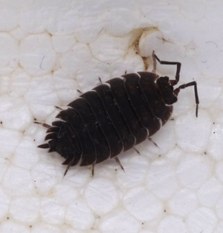 Ag-NP in Isopods |
|
Ag-NPs in Plants (Wheat) |
|
|
 Rhizosphere & bioavailability Rhizosphere & bioavailability |
|
Ag2S-NPs in Terrestrial or Aquatic Mesocosms |
Read more |
|
NanoFASE Work Package 9 |
Contact

Nico van den Brink
Email: Nico.vandenbrink@wur.nl
 Susana Loureiro
Susana Loureiro
Email: sloureiro@ua.pt

